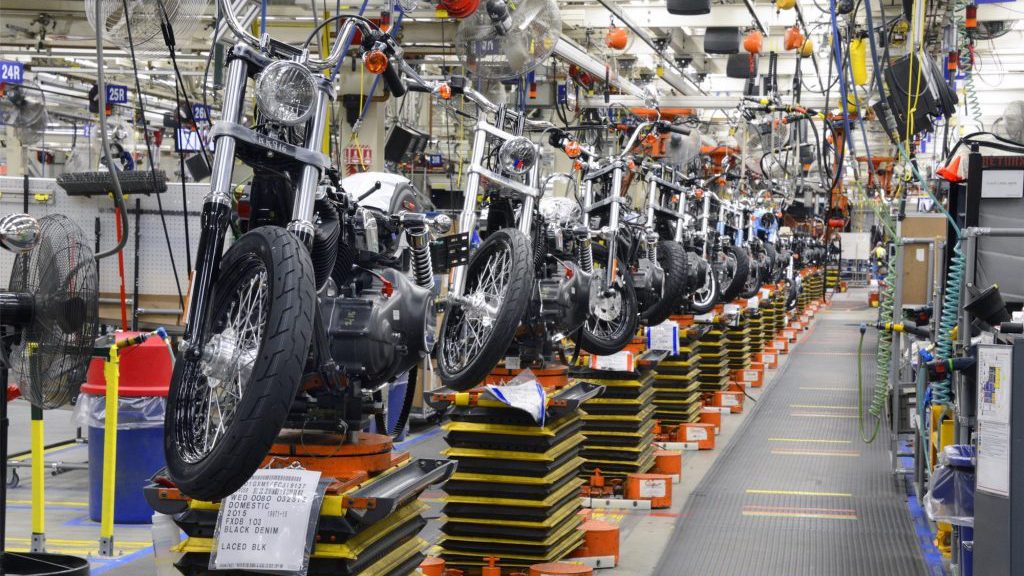
How to Increase Motorcycle Production with Automated Paint Inspection?
Share
In the fast-paced realm of motorcycle manufacturing, innovation is the key to staying ahead. One of the latest trends reshaping the industry is the use of automated paint inspection systems. These advanced technologies not only improve the quality of paint finishes but also significantly boost production efficiency.
This article delves into how to increase motorcycle production with automated paint inspection and explores the vital steps and considerations necessary for implementing these technologies successfully.

The Importance of Quality Paint in Motorcycle Production
Paint plays a crucial role in a motorcycle's aesthetics and protection against corrosion and wear. High-quality paint finishes enhance the visual appeal and resale value of motorcycles. However, achieving perfection in paint application can be challenging due to various factors such as environmental conditions and human error.
With the implementation of automated paint inspection, manufacturers can minimize defects and ensure consistent quality across all motorcycle units. As a result, businesses can experience a notable increase in throughput and customer satisfaction.
Understanding Automated Paint Inspection
Automated paint inspection uses advanced technology, including machine vision and artificial intelligence (AI), to detect defects in the paint finish. These systems operate by capturing high-resolution images of the painted surfaces and analyzing them for imperfections such as runs, sags, and uneven coverage.
By rapidly identifying defects, manufacturers can address issues in real-time rather than relying on manual inspections, which could result in errors or oversight. Thus, integrating automated paint inspection streamlines the production process and helps manufacturers meet consumer demands swiftly.
Key Benefits of Automated Paint Inspection Systems
Automated paint inspection systems offer numerous advantages that can lead to enhanced motorcycle production:
- Precision: High-resolution imaging technology ensures that even the smallest paint defects are detected, leading to improved product quality.
- Speed: Automated systems can inspect large batches of motorcycles in a fraction of the time compared to manual inspections.
- Cost-Effectiveness: By reducing the incidence of defects, companies can save costs associated with repainting and warranty claims.
- Data Analytics: These systems can collect data on defect patterns, enabling manufacturers to make informed decisions for process improvements.
Implementing Automated Paint Inspection in Your Motorcycle Manufacturing Process
Integrating an automated paint inspection system requires careful planning and execution:
Step 1: Evaluate Your Current Process
Begin by assessing your current paint application process. Identify pain points, looking for areas where defects frequently occur or where the inspection process could be improved. Consider whether your equipment can accommodate an automated system.
Step 2: Choose the Right Technology
Select a suitable automated inspection technology based on your specific needs. Evaluate options ranging from simple cameras to advanced AI-driven systems. The chosen solution should seamlessly integrate into your existing workflow.
Step 3: Train Your Staff
Proper training for your staff is essential to maximize the potential of new technologies. Ensure that your team is proficient in operating the automated inspection equipment and understands how to interpret the data it produces.
Step 4: Monitor and Optimize
Once implemented, continuously monitor the performance of your automated paint inspection system. Analyze the collected data to identify trends and make necessary adjustments to optimize your processes. Regular reviews help ensure that the system operates at peak performance, thus maximizing efficiency.
Real-World Applications
Several motorcycle manufacturers have already reaped the benefits of automated paint inspection. For instance, Yamaha has integrated machine vision technology into its production lines where they manage to keep quality consistent while also maintaining high throughput.
Challenges and Solutions
While the benefits of automated paint inspection systems are clear, there are challenges in implementation. Manufacturers may face issues such as high initial investment costs and the need for regular maintenance. However, these challenges can be mitigated through:
- ROI Assessment: Prior to investing, conduct a thorough return on investment analysis to justify the expenses with potential gains.
- Supplier Support: Work closely with technology providers to ensure support and maintenance are readily available.
Continuous Improvement
Further, as technology evolves, so should your systems. Staying informed about the latest advancements in automated inspection can lead to new developments that further enhance production capabilities.
Conclusion: Embracing Automation for Future Growth
In summary, increasing motorcycle production with automated paint inspection is not just a trend; it's a strategic move towards industry innovation. By minimizing defects and enhancing production efficiency, manufacturers can better meet consumer demand and maintain a competitive edge.
As technology continues to advance, the integration of automated systems in the manufacturing process could become the norm rather than the exception. Embracing these changes today will prepare motorcycle manufacturers for success in the future.

FAQs
1. What is automated paint inspection?
Automated paint inspection utilizes advanced imaging systems and AI technologies to detect defects in paint finishes on motorcycles and other vehicles.
2. How can I implement automated paint inspection in my factory?
Start by evaluating your current process, selecting appropriate technology, training staff, and continuously monitoring system performance for optimization.
3. What are the benefits of using automated paint inspection?
Benefits include improved precision, speed, cost-effectiveness, and data analytics capabilities, leading to higher production quality and efficiency.
